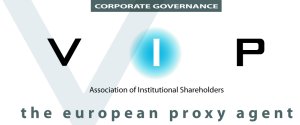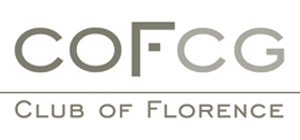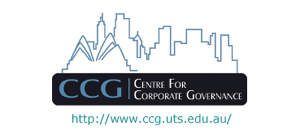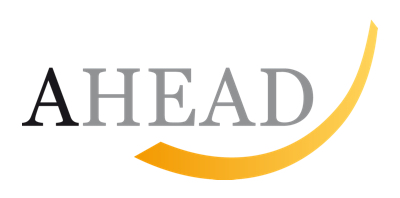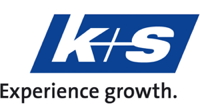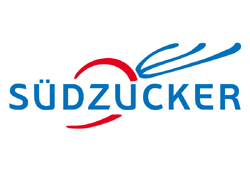Campus
Shareholders often in the dark
 If a company’s own shareholders have not been identified, investor-relations activities are often ineffective. All the more surprising are the findings of the Investor Relations Panel, in which in the third quarter of 2011 the consulting firm cometis asked IR managers about their knowledge of their company’s shareholders: only two thirds of companies surveyed identify their shareholders. As a reason for the omission, 40 percent of respondents said the costs and benefits were in no reasonable relation. Companies in indices more frequently determine who is among their shareholders than smaller companies. Some 81 percent use data providers such as Bloomberg and FactSet in evaluating shareholders. While 69 percent of companies have registered shares, only half of the companies are also in active dialogue with their shareholders partly through external service providers. Eight out of ten respondents claimed to know about half of the shareholders who hold over 0.5 percent of company shares. The most common distinguishing criterion for IR work is the classification into institutional shareholders and private investors. There follow geographical location, investment style and share of votes. Amazingly, approximately one third of companies that have determined their shareholders do not incorporate this knowledge into their IR work.
If a company’s own shareholders have not been identified, investor-relations activities are often ineffective. All the more surprising are the findings of the Investor Relations Panel, in which in the third quarter of 2011 the consulting firm cometis asked IR managers about their knowledge of their company’s shareholders: only two thirds of companies surveyed identify their shareholders. As a reason for the omission, 40 percent of respondents said the costs and benefits were in no reasonable relation. Companies in indices more frequently determine who is among their shareholders than smaller companies. Some 81 percent use data providers such as Bloomberg and FactSet in evaluating shareholders. While 69 percent of companies have registered shares, only half of the companies are also in active dialogue with their shareholders partly through external service providers. Eight out of ten respondents claimed to know about half of the shareholders who hold over 0.5 percent of company shares. The most common distinguishing criterion for IR work is the classification into institutional shareholders and private investors. There follow geographical location, investment style and share of votes. Amazingly, approximately one third of companies that have determined their shareholders do not incorporate this knowledge into their IR work.
SMEs are reluctant about IPOs
In a joint study, the Deutsches Aktieninstitut, Deutsche Börse and the Commerzbank targeted the capital-market orientation and financing of medium-sized companies. The majority of medium-sized German companies reported difficulties in accessing credit as a result of the financial crisis. The external financing of growth through banks is coming up against ever-greater limits for SMEs, while financing aspects are taking on an increasingly larger role in the businesses’ overall strategy. Nine out of ten companies said they want to strengthen their liquidity or their equity capital. They often remain in typical SME financing patterns in which bank credit continues to be the first choice. Although 45 of the 303 companies surveyed, or 15 percent, can in principle imagine having recourse to an IPO, both a general skepticism as well as the currently very volatile market environment curb potential and already envisaged plans. The study identified some 1,250 firms which, measured by sales, growth and return on assets, are market-capable. Their low affinity for the exchange is thus based less on inability than on unwillingness, says the analysis.
Market Regulations for lobbyists called for
The Otto Brenner Foundation, close to IG Metall, has conducted 40 quality expert interviews on the subject of lobbying and cast the results of this survey into concrete proposals to regulate the influence of lobbyists. To date, Germany had neither clarified nor regulated its relationship with the lobbies, criticized Jupp Legrand, managing director of the Otto Brenner Foundation. The “market regulations for lobbyists” worked out by the foundation are thus an appeal to Parliament to regulate the uncontrolled growth of lobbying. Specifically, the regulations would require lobbyists in future to seek formal accreditation, submit to a code of conduct and be listed in a publicly available register. To increase transparency, comments, opinions and expertise would in future be published. The Foundation wants MPs’ secondary activities to be strictly limited, and elected officials are to have a waiting period after leaving politics. In addition, the trade unions want ratification of the UN Convention against corruption. The commissioning of external bills concocted outside parliament should also be restricted, and outsourcing of official work as well as government sponsoring should be banned altogether.
Banks contend with LCR and NSFR
While European banks want to meet the new capital requirements of Basel III speedily, the plans for the new liquidity rules are presenting them with great challenges, according to a study by Boston Consulting Group. By the end of June 2012, banks must reach the new target rate of nine percent core capital ratio and build up a capital buffer against European government bonds. the majority of banks surveyed do not expect to meet the liquidity coverage ratio (LCR) or the Net Stable Funding Ratio (NSFR) early. This shows that refinancing and the liquidity crunch are currently far more explosive topics than capital requirements, according to the study, entitled “Facing New Realities in Global Banking.”
Hardly any lessons from the financial crisis
According to a study among the 30 largest listed banks presented by private bank Sarasin on 13 December, the world’s financial houses have drawn hardly any lessons from the near-collapse of some banks. According to Sarasin, most financial institutions rate from mediocre to bad in the core areas of system relevance, integrating sustainability into core business operations and compliance. There is not yet any sign of a general movement towards more sustainable business models and reduced risks for the general public.
Reports should be made simpler and clearer
 Rather than serving their readers, company-report texts often counteracted the true goal of a balance-sheet, namely transparency, said Manfred Piwinger at the 2011 Business Reporting Seminar of the Deutsches Aktieninstitut (DAI). A member of the Main Committee of the German Public Relations Association (DPRG), he explained with examples from annual reports the misleading use of foreign words. There was a lack of employee language skills, and the staff cuts in the media companies had led to significant quality losses. Particularly in the capital market there had developed a technical language that could only understood by experts. Given the increasing need for information that is accessible at all times and the lack of reading time, the reader ought however to be able to rely on a clear presentation in reports.
Rather than serving their readers, company-report texts often counteracted the true goal of a balance-sheet, namely transparency, said Manfred Piwinger at the 2011 Business Reporting Seminar of the Deutsches Aktieninstitut (DAI). A member of the Main Committee of the German Public Relations Association (DPRG), he explained with examples from annual reports the misleading use of foreign words. There was a lack of employee language skills, and the staff cuts in the media companies had led to significant quality losses. Particularly in the capital market there had developed a technical language that could only understood by experts. Given the increasing need for information that is accessible at all times and the lack of reading time, the reader ought however to be able to rely on a clear presentation in reports.
Information about executive pay in 2011
The Federal Gazette (Bundesanzeiger) has this year again published a study on salaries at German listed companies. The analysis asks how the level of remuneration and the share of performance-related components have developed between 2006 and 2010. Is the pay appropriate, and what role do factors such as index, sector, total assets and board size play in the salaries of managers? In what relation does the amount of remuneration stand to the performance-related components? The 111-page study, published in mid November, can be ordered at a price of €325 from the Bundesanzeiger.

